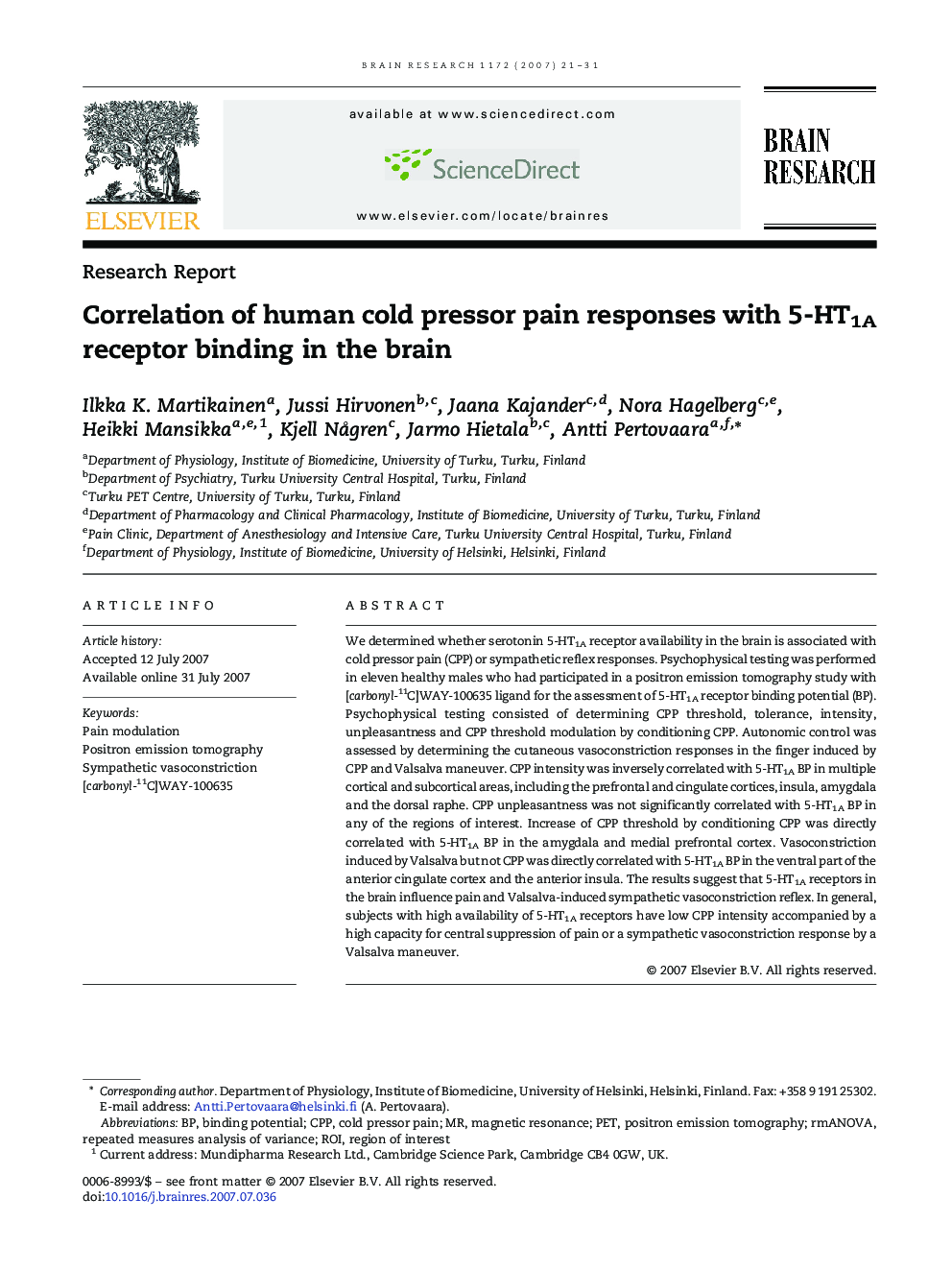| Article ID | Journal | Published Year | Pages | File Type |
|---|---|---|---|---|
| 4330592 | Brain Research | 2007 | 11 Pages |
We determined whether serotonin 5-HT1A receptor availability in the brain is associated with cold pressor pain (CPP) or sympathetic reflex responses. Psychophysical testing was performed in eleven healthy males who had participated in a positron emission tomography study with [carbonyl-11C]WAY-100635 ligand for the assessment of 5-HT1A receptor binding potential (BP). Psychophysical testing consisted of determining CPP threshold, tolerance, intensity, unpleasantness and CPP threshold modulation by conditioning CPP. Autonomic control was assessed by determining the cutaneous vasoconstriction responses in the finger induced by CPP and Valsalva maneuver. CPP intensity was inversely correlated with 5-HT1A BP in multiple cortical and subcortical areas, including the prefrontal and cingulate cortices, insula, amygdala and the dorsal raphe. CPP unpleasantness was not significantly correlated with 5-HT1A BP in any of the regions of interest. Increase of CPP threshold by conditioning CPP was directly correlated with 5-HT1A BP in the amygdala and medial prefrontal cortex. Vasoconstriction induced by Valsalva but not CPP was directly correlated with 5-HT1A BP in the ventral part of the anterior cingulate cortex and the anterior insula. The results suggest that 5-HT1A receptors in the brain influence pain and Valsalva-induced sympathetic vasoconstriction reflex. In general, subjects with high availability of 5-HT1A receptors have low CPP intensity accompanied by a high capacity for central suppression of pain or a sympathetic vasoconstriction response by a Valsalva maneuver.
